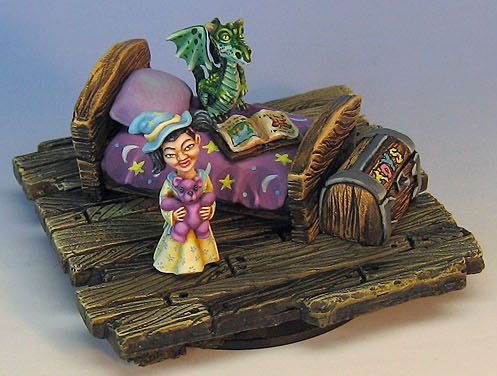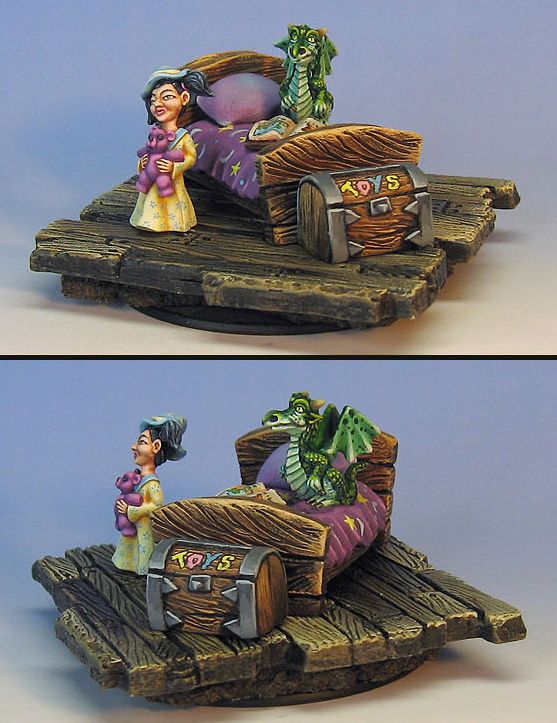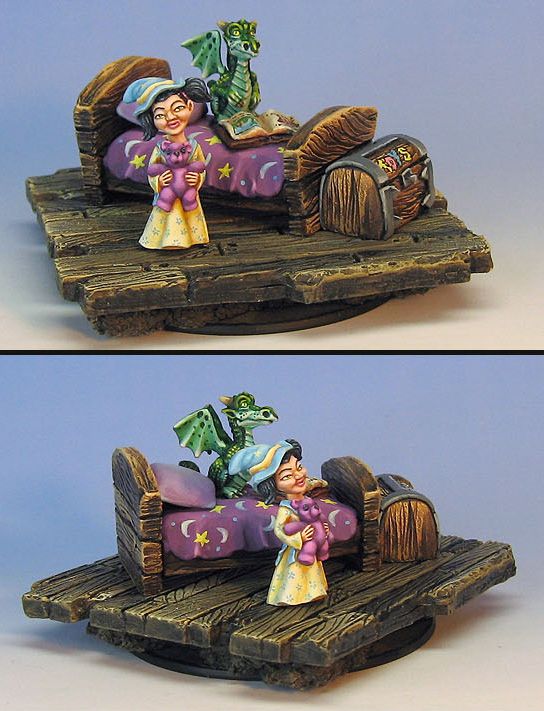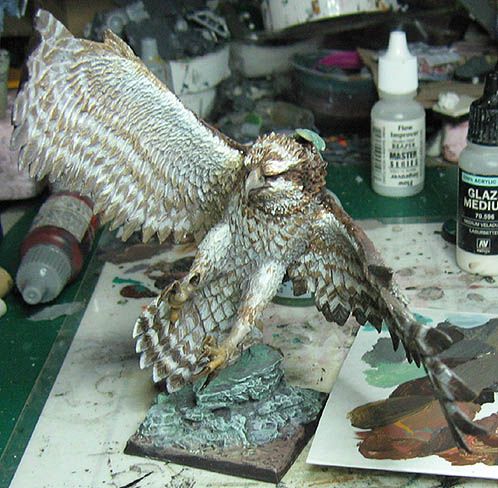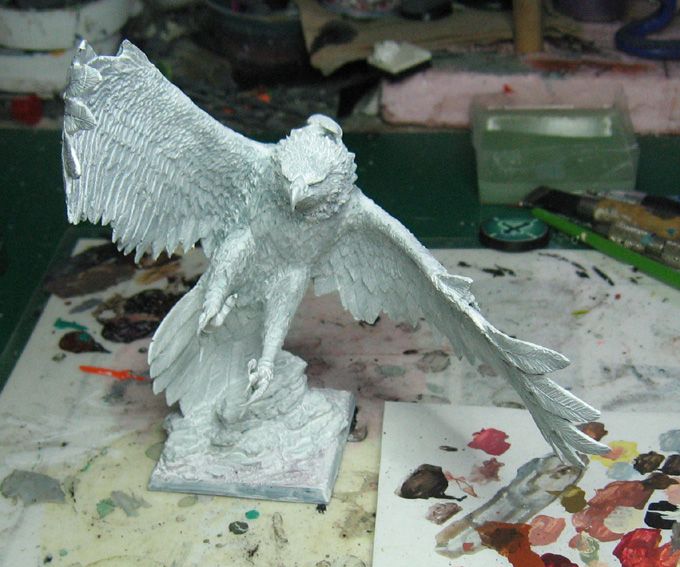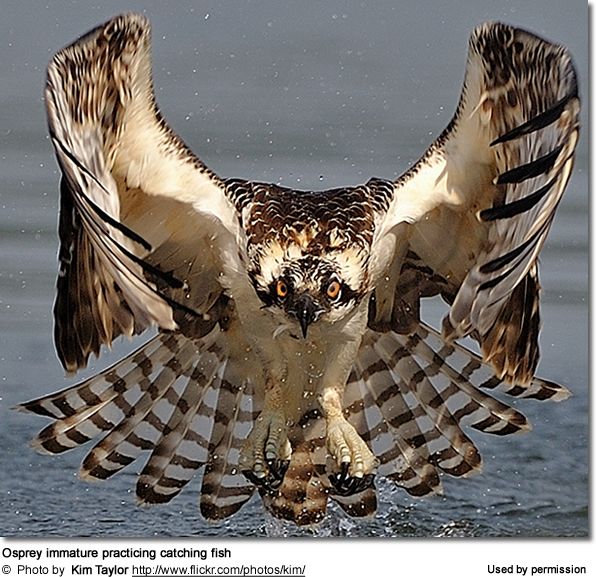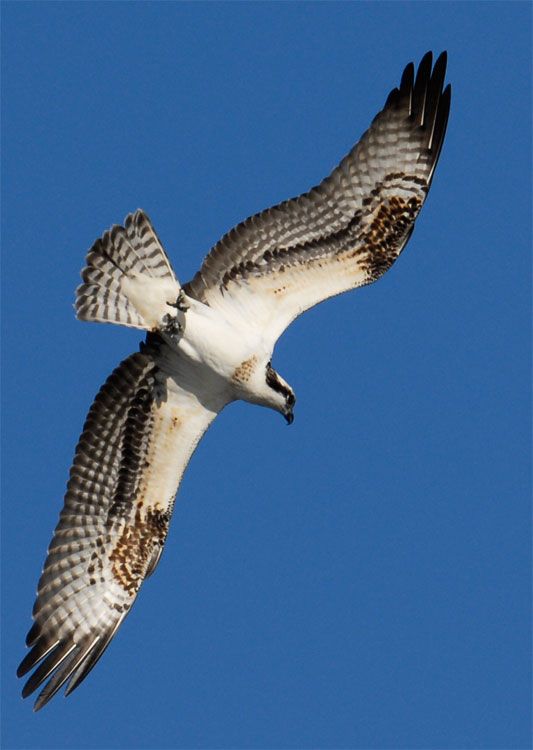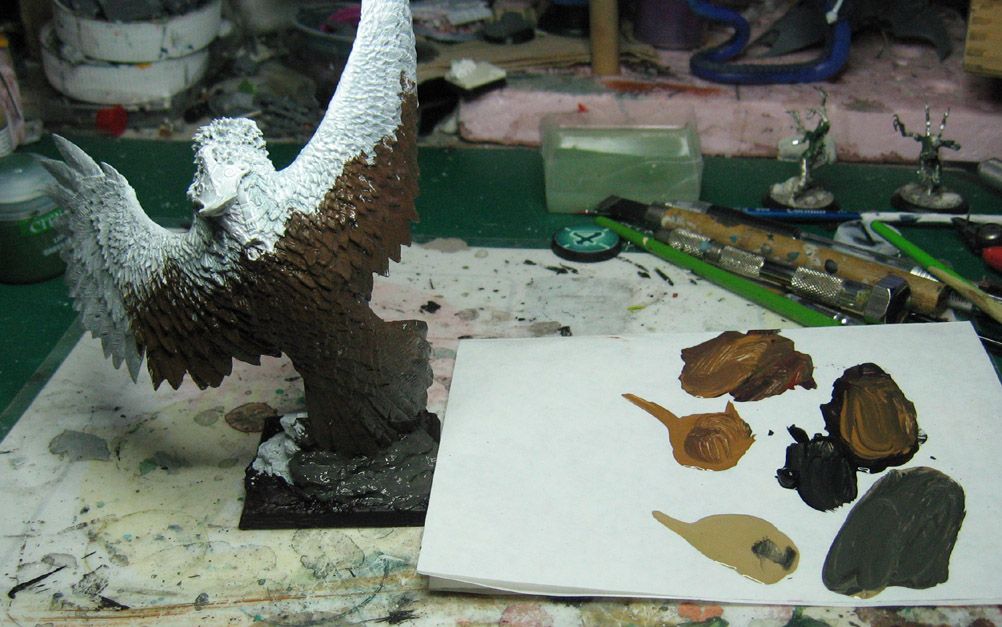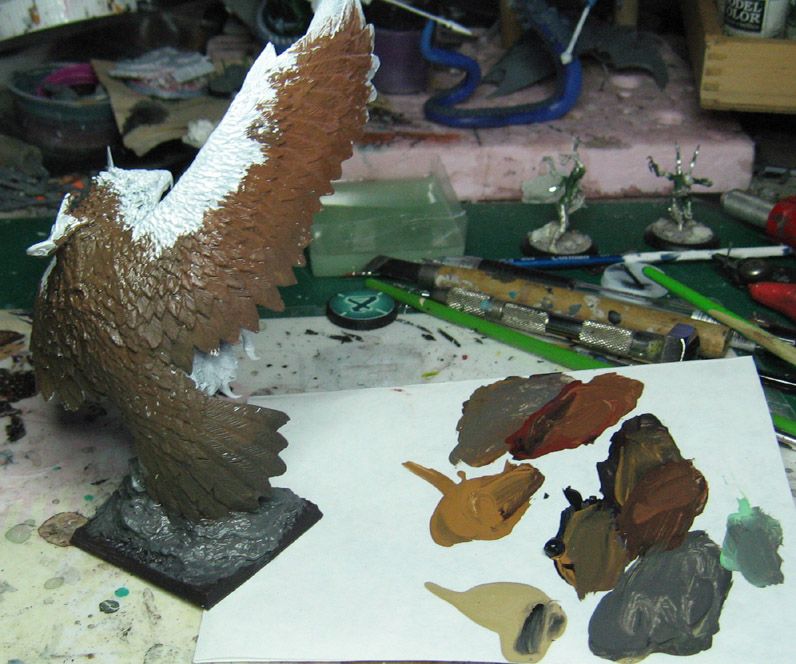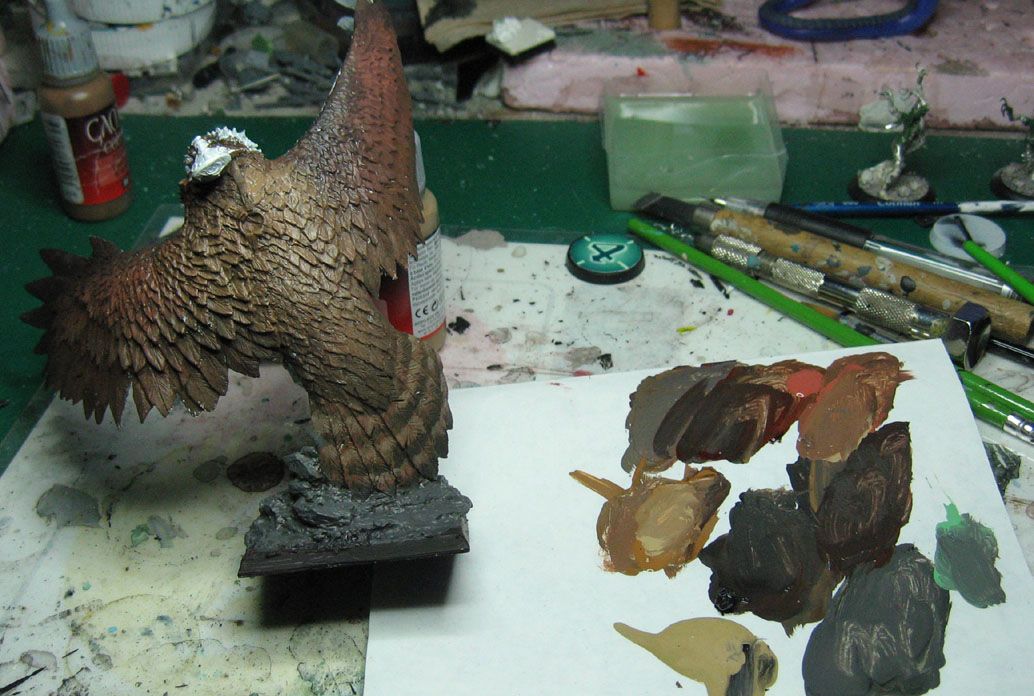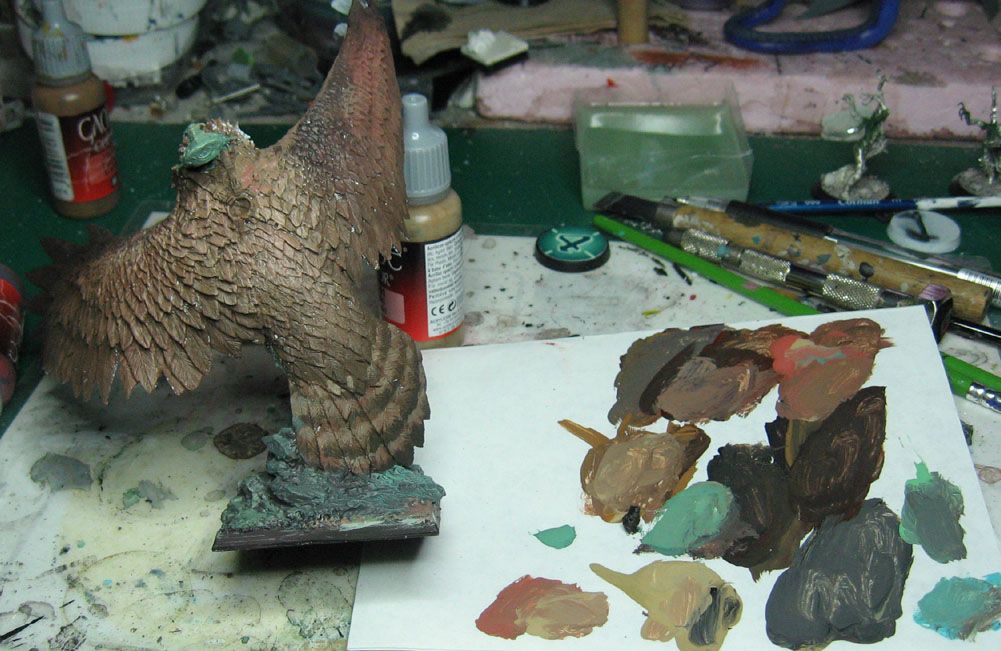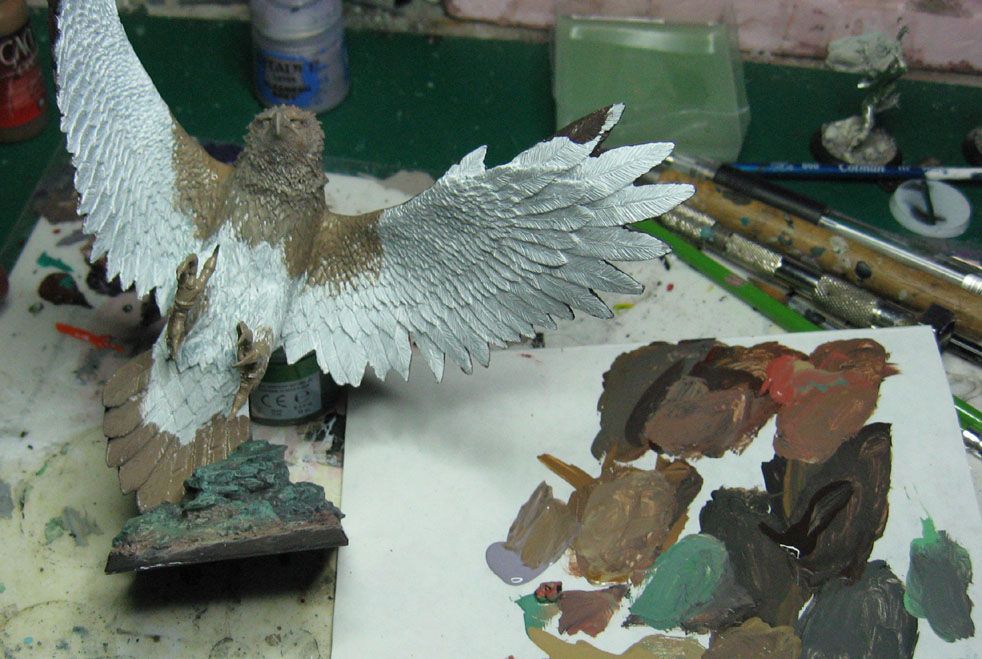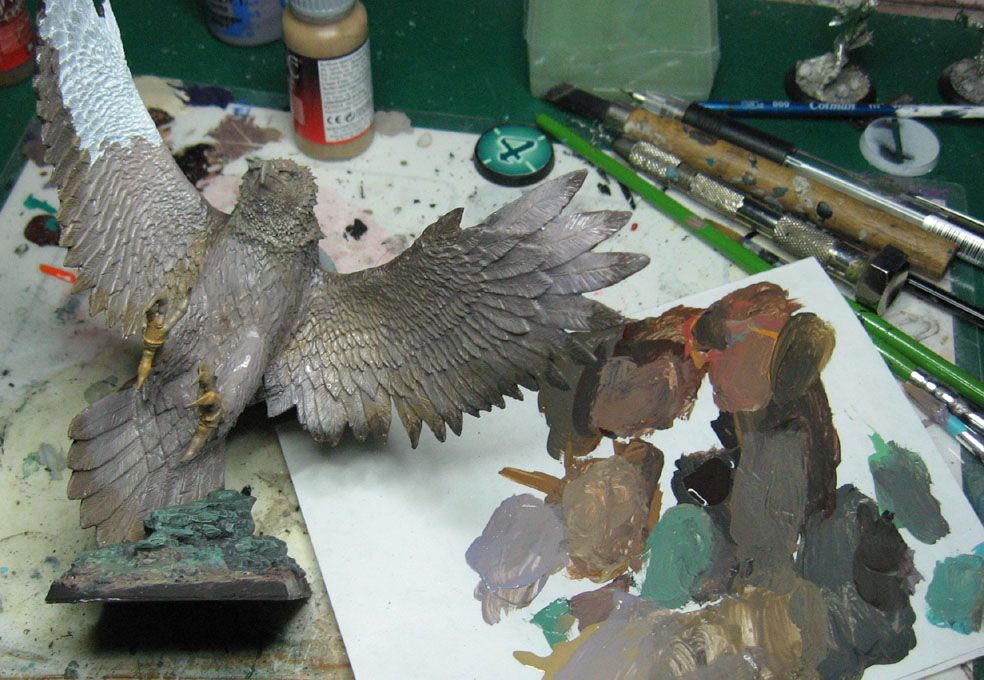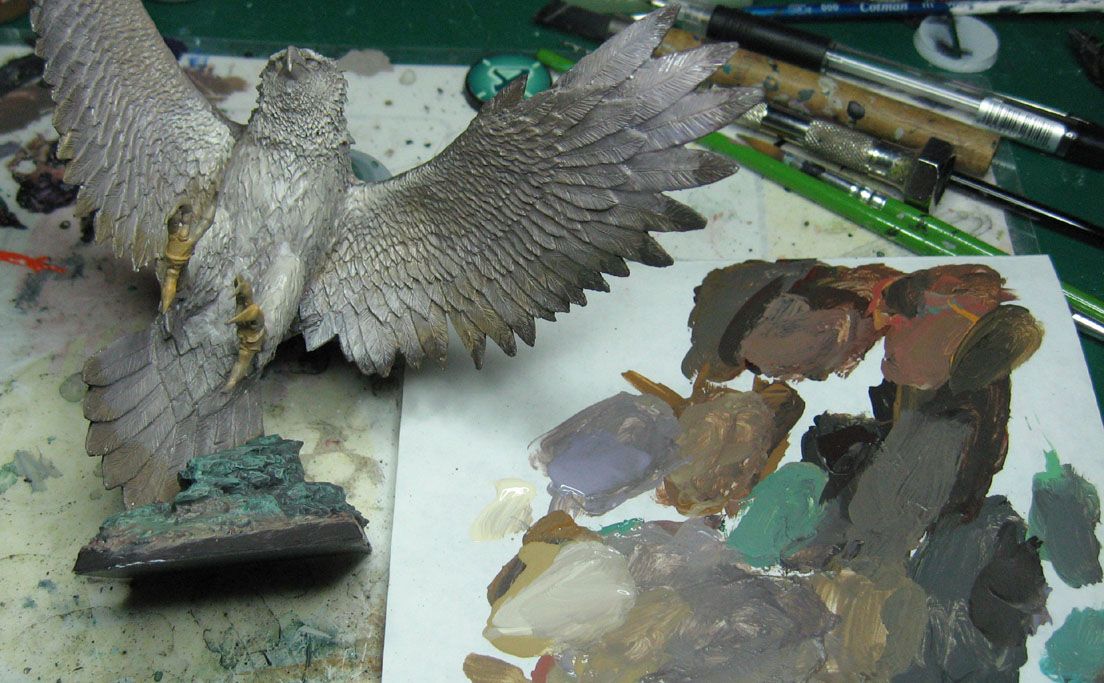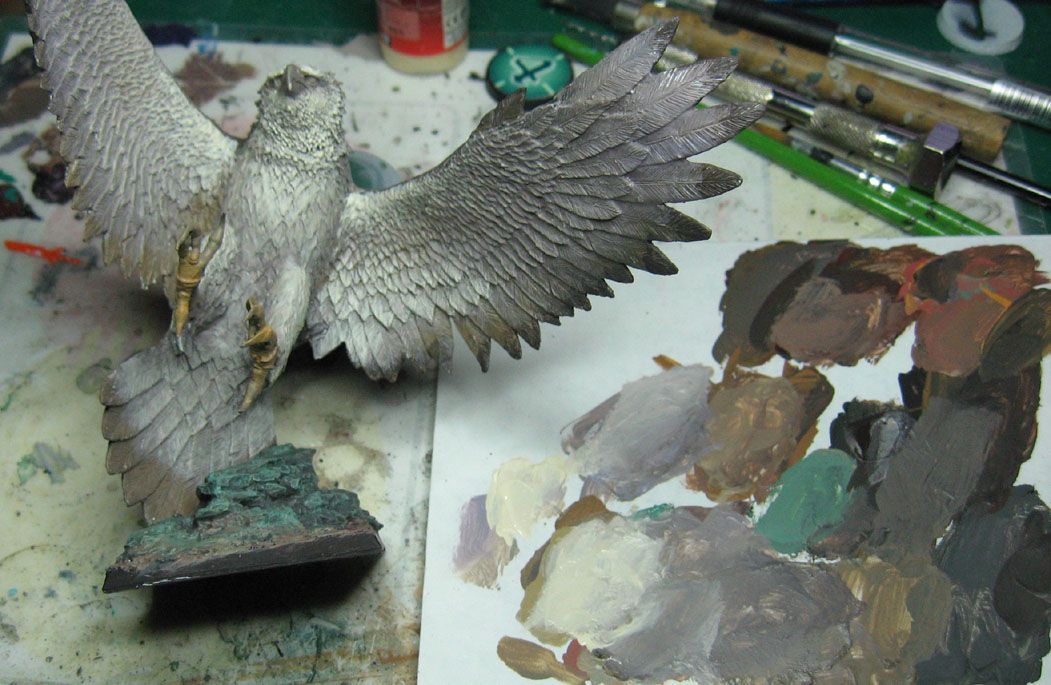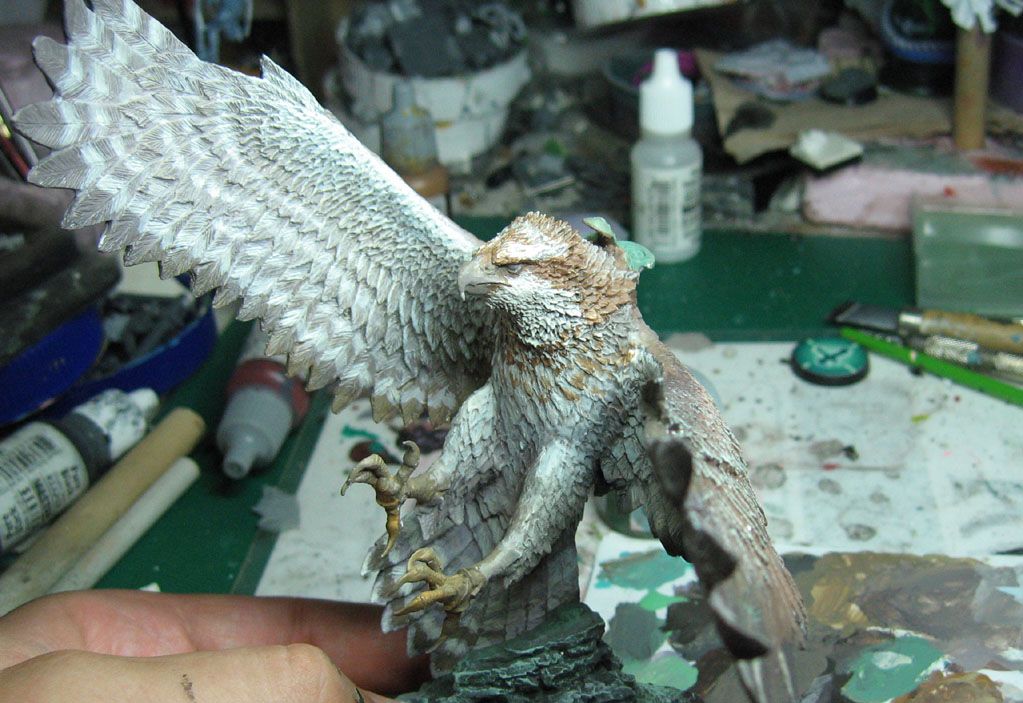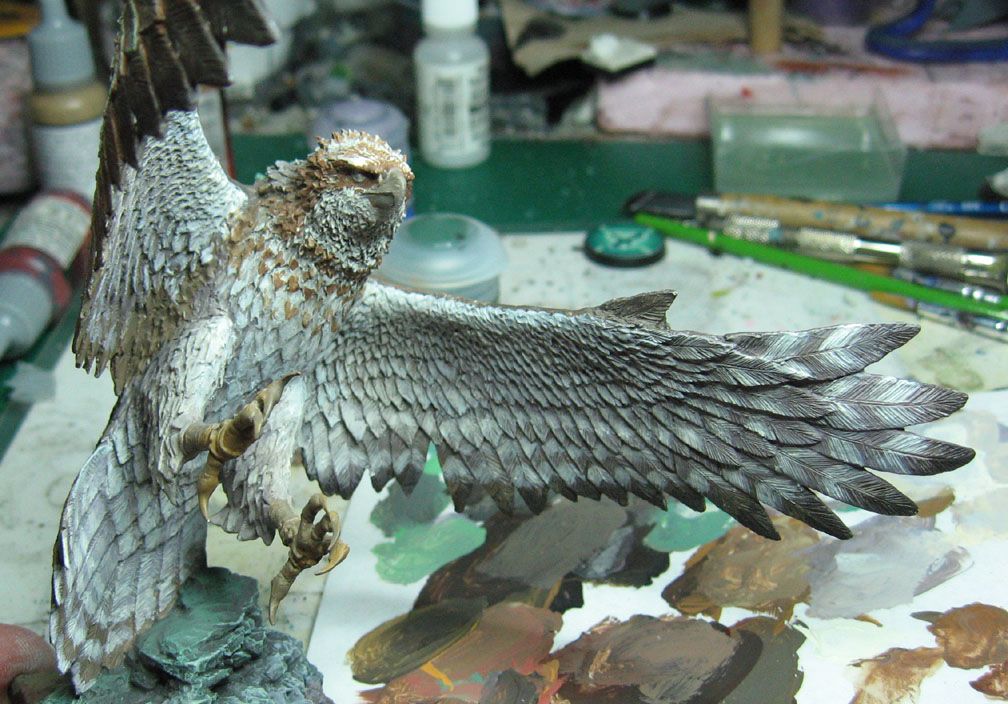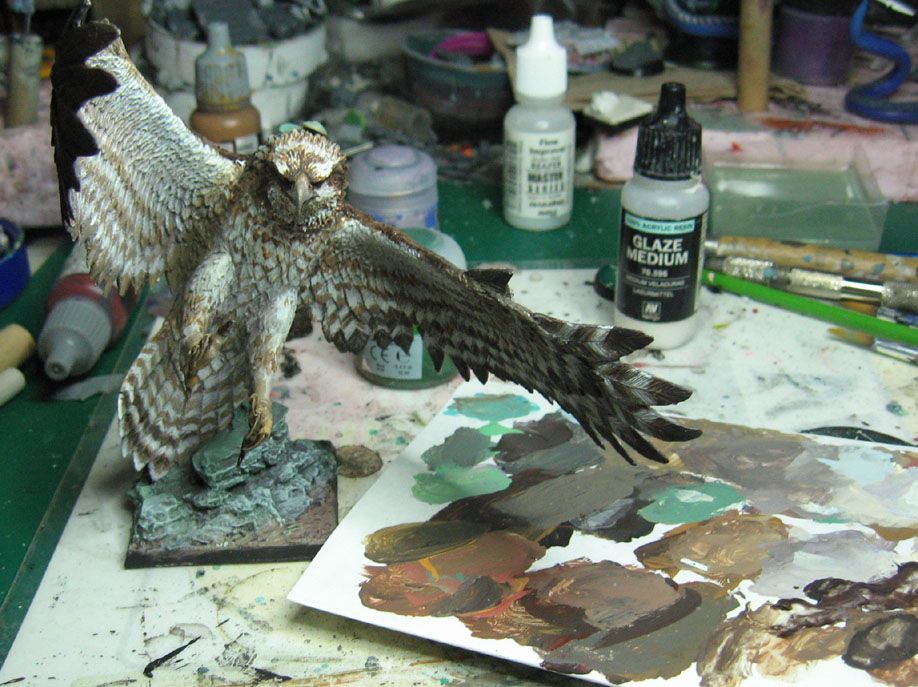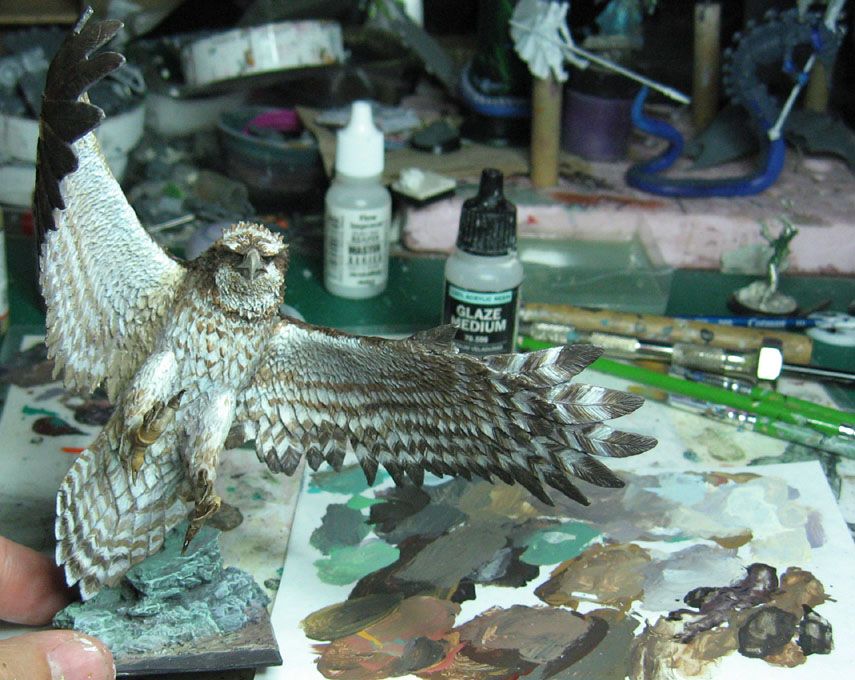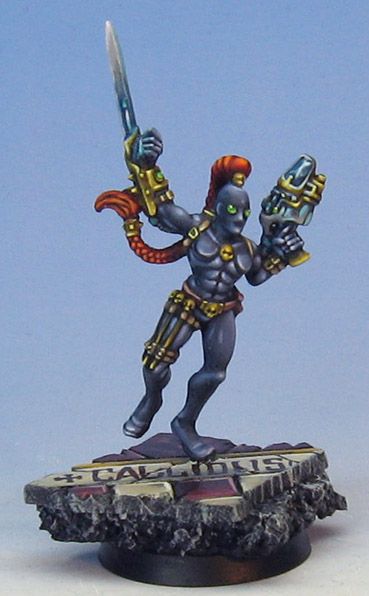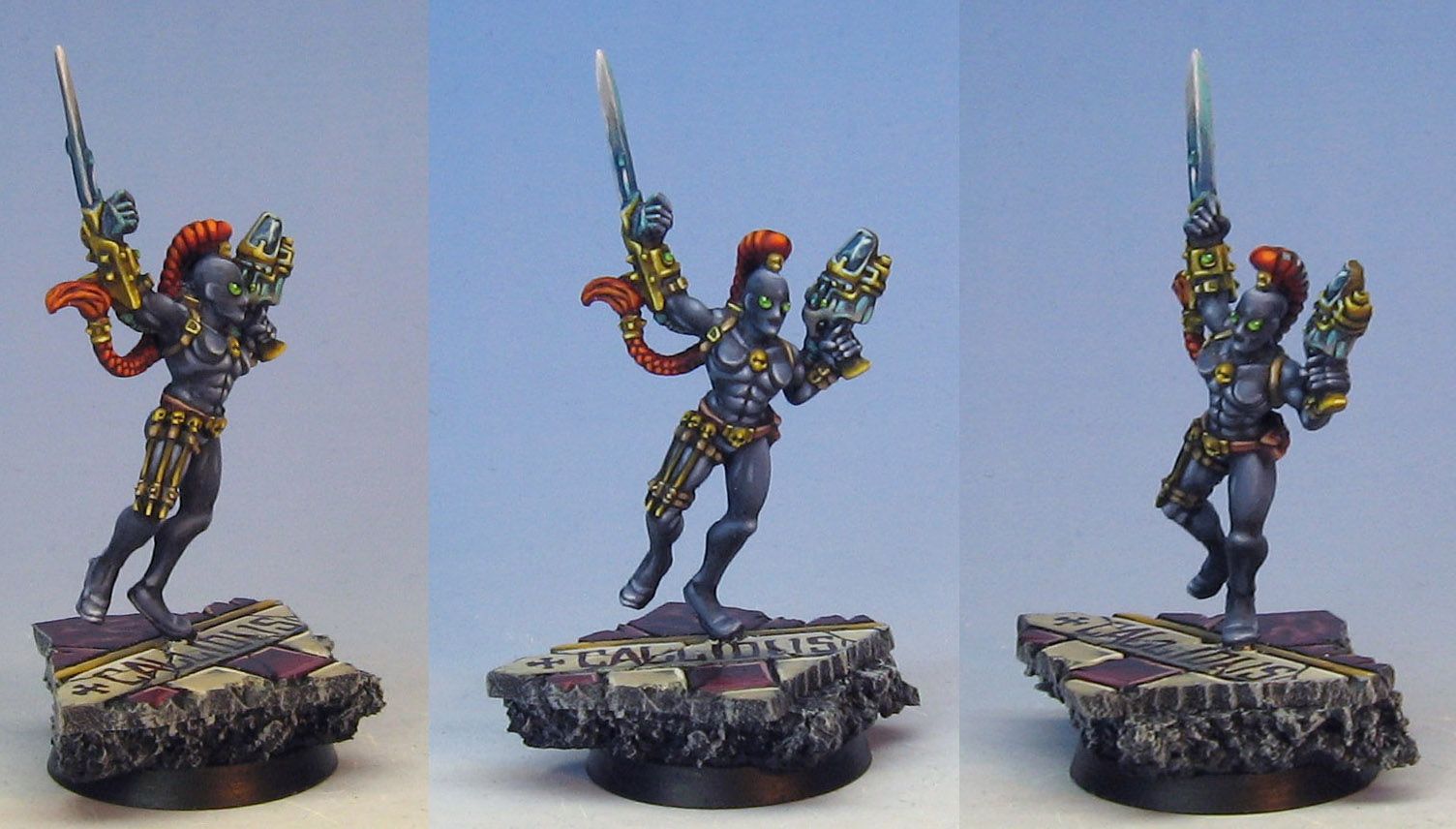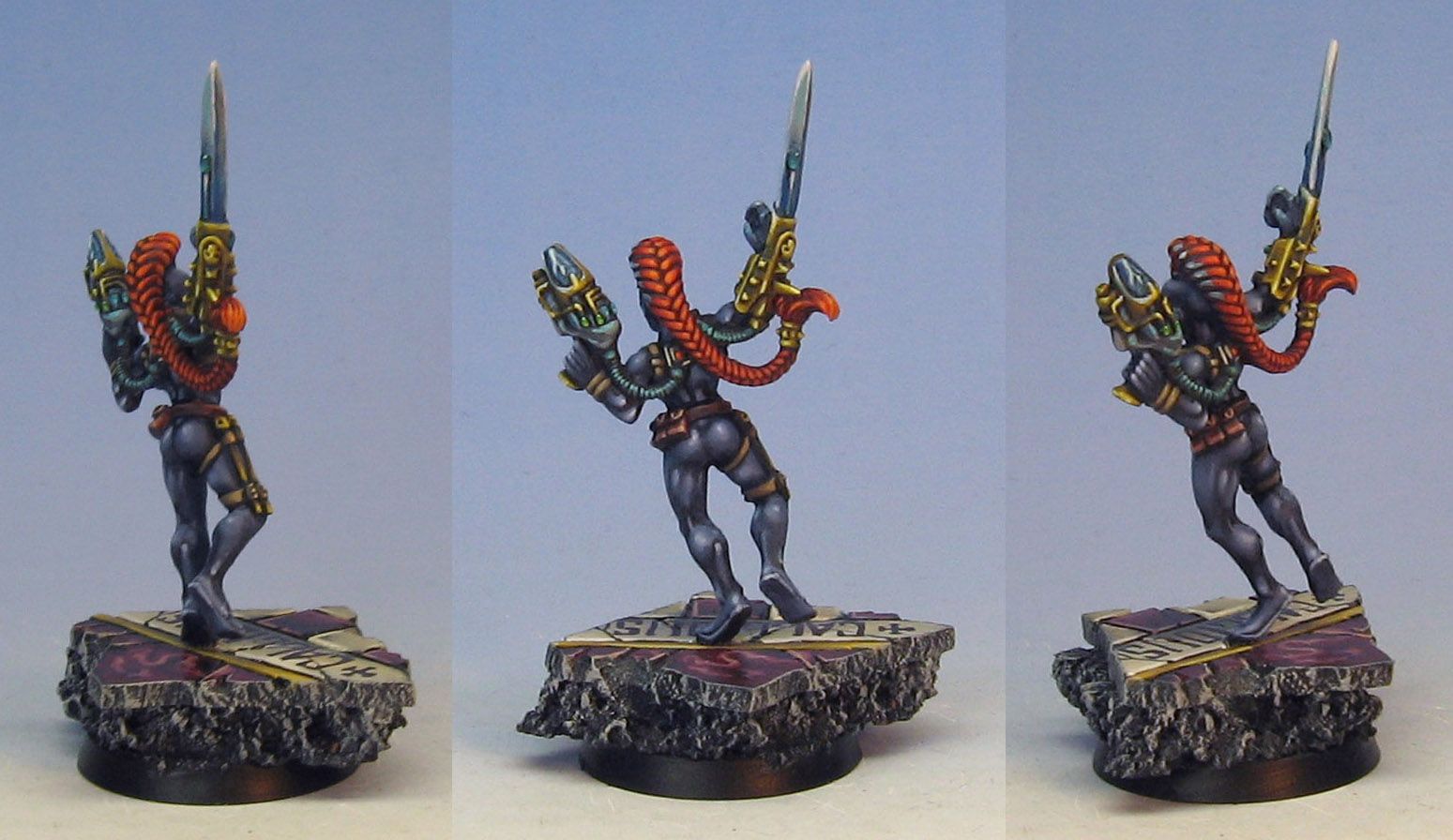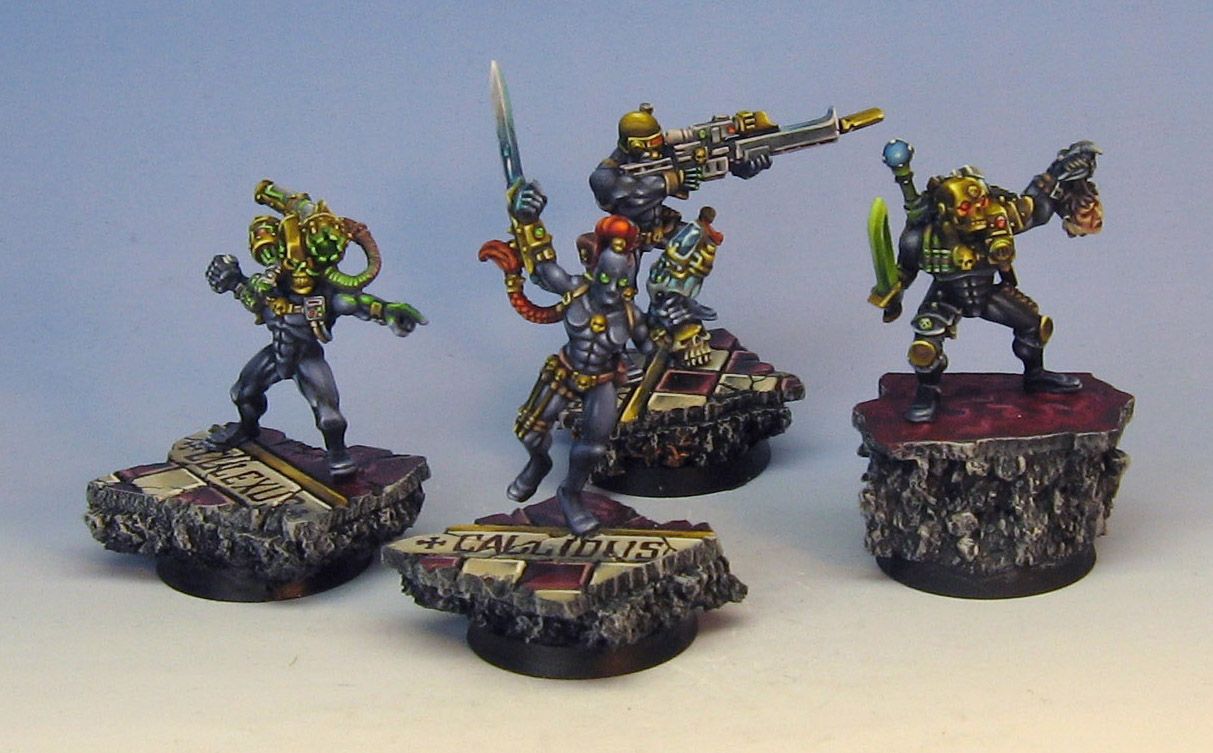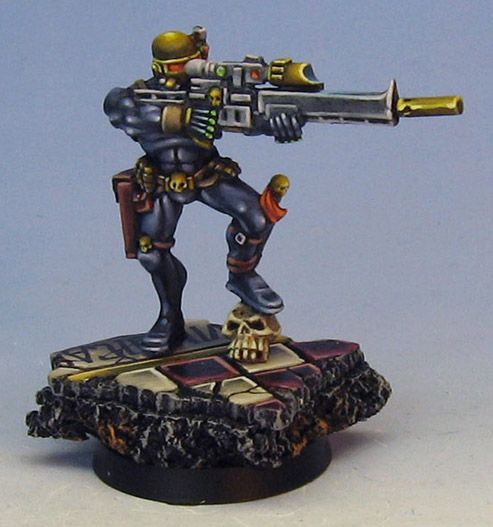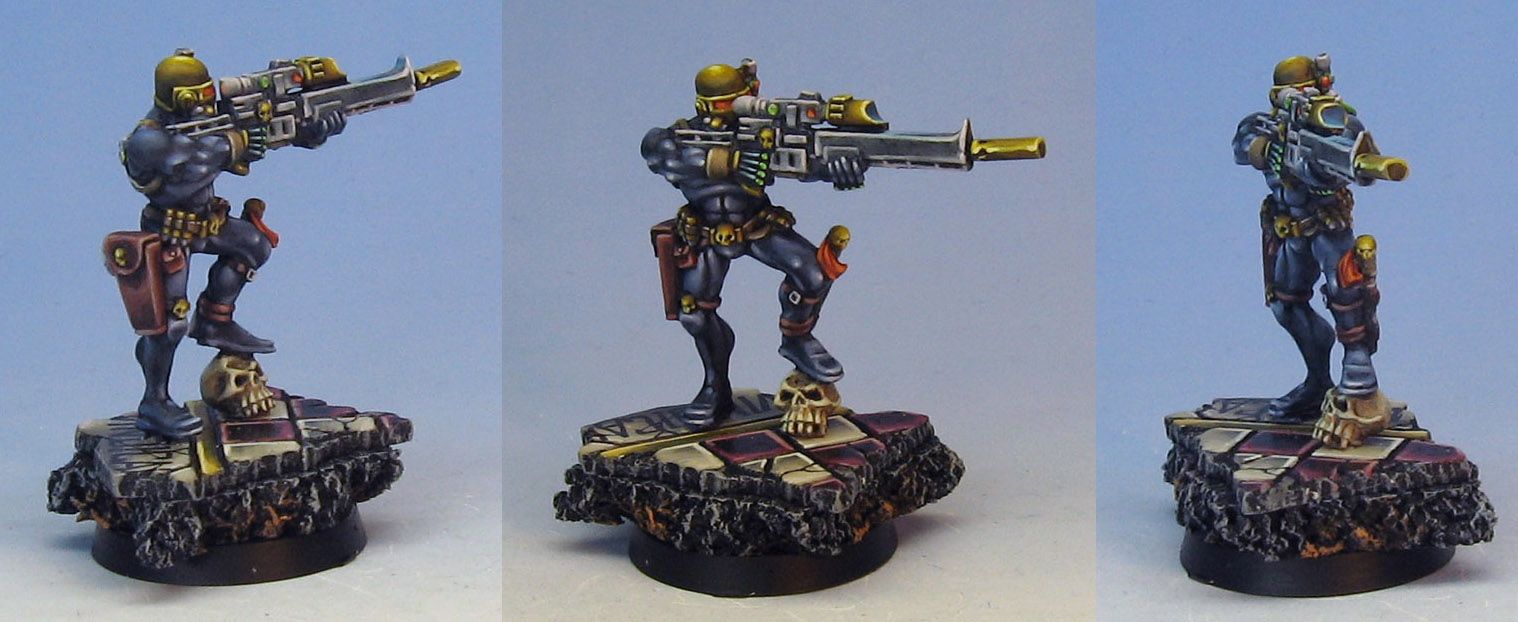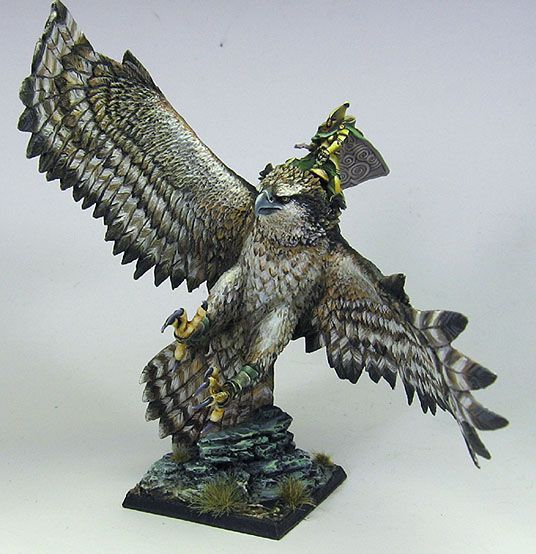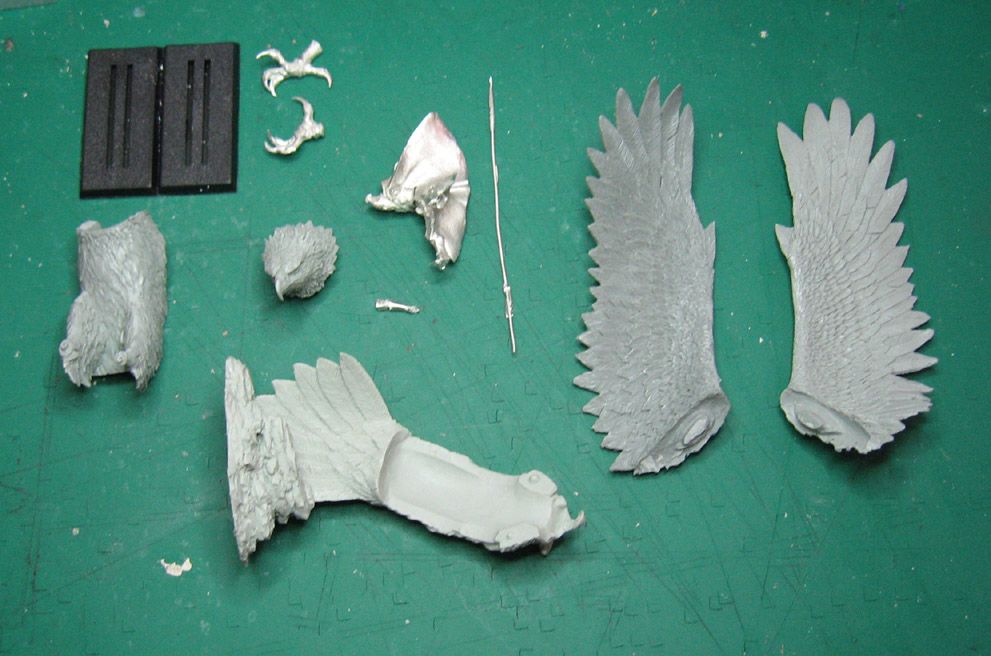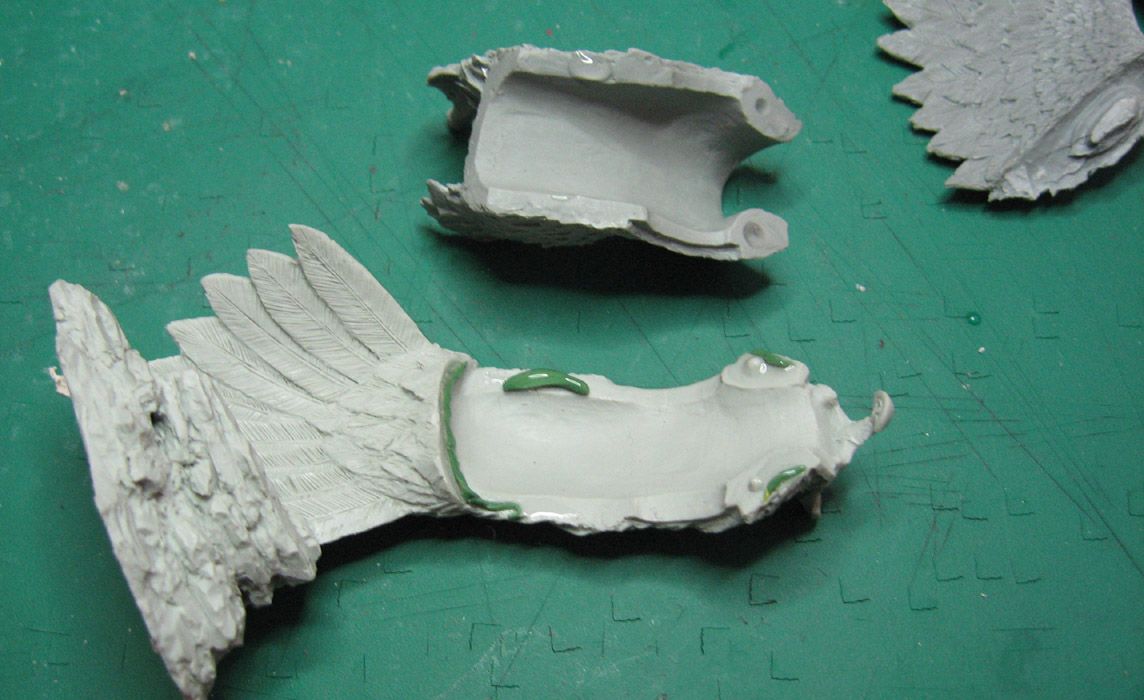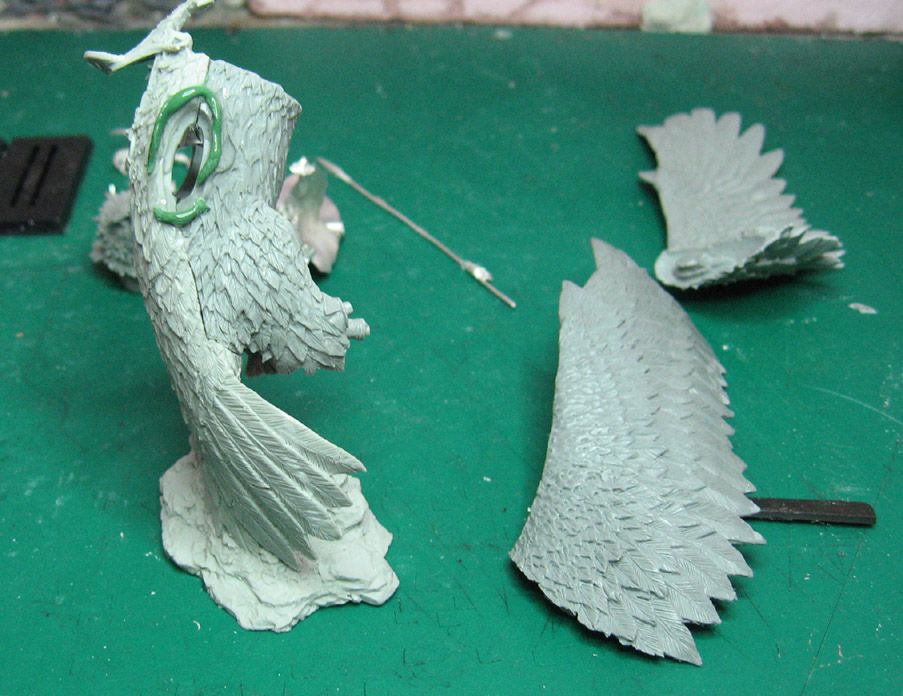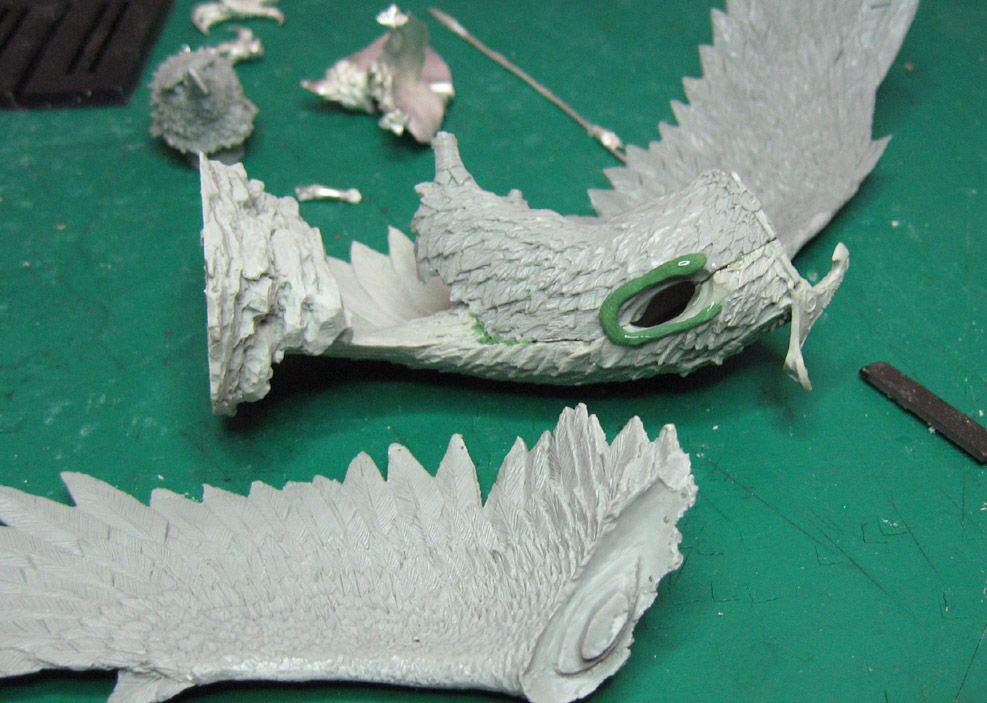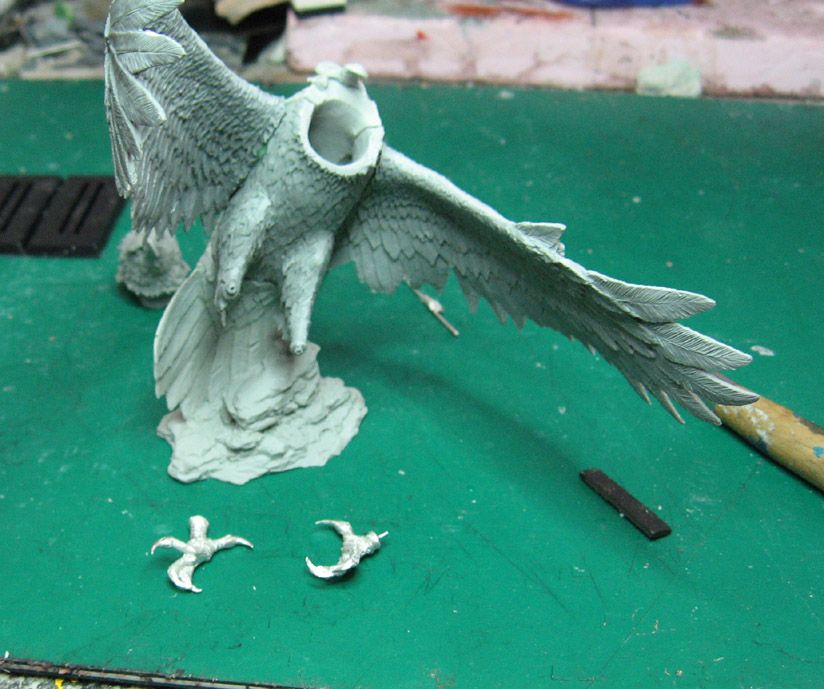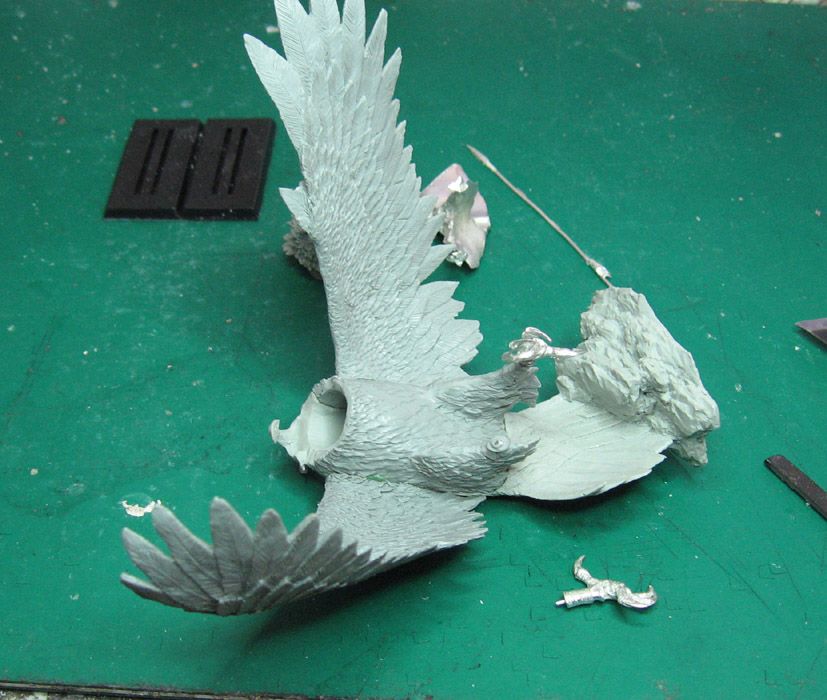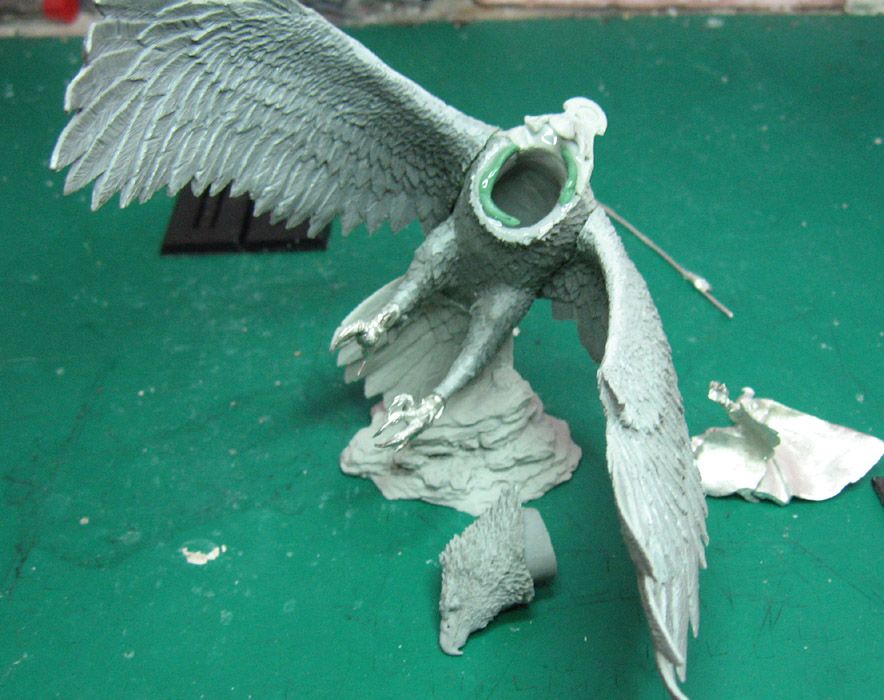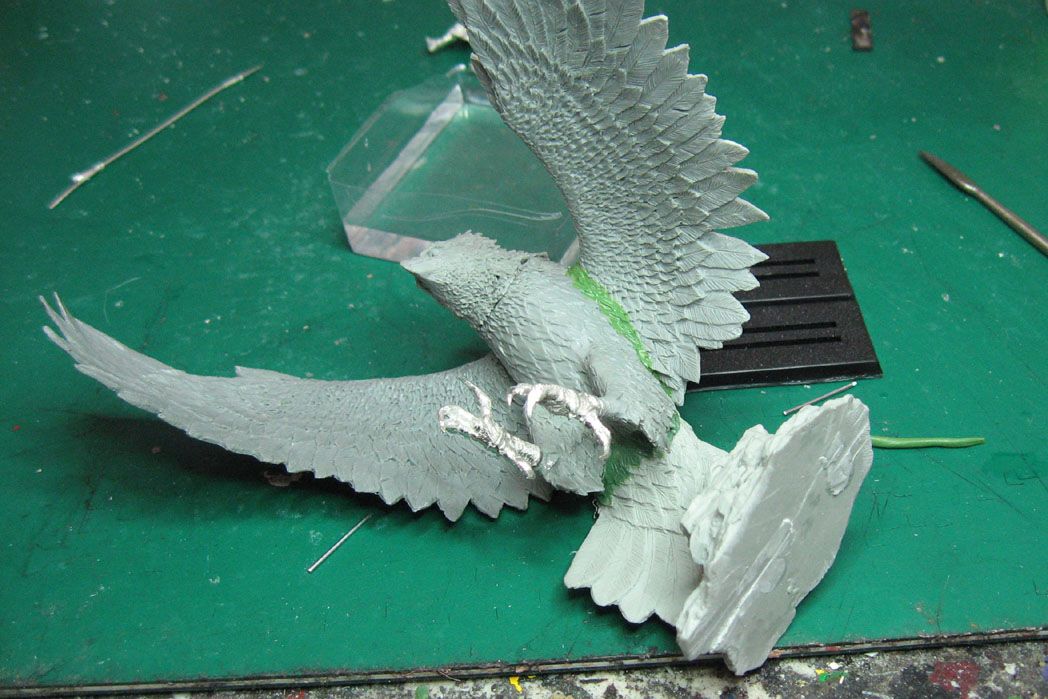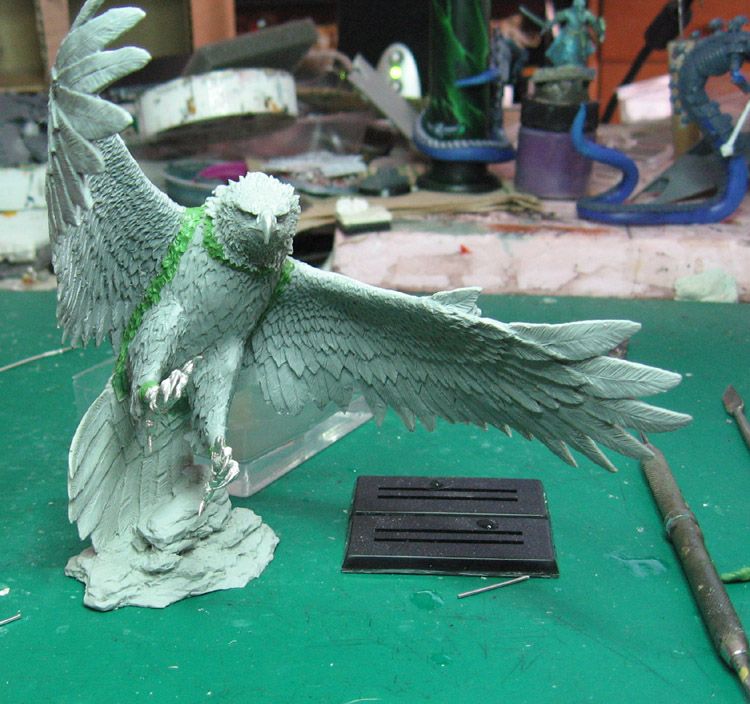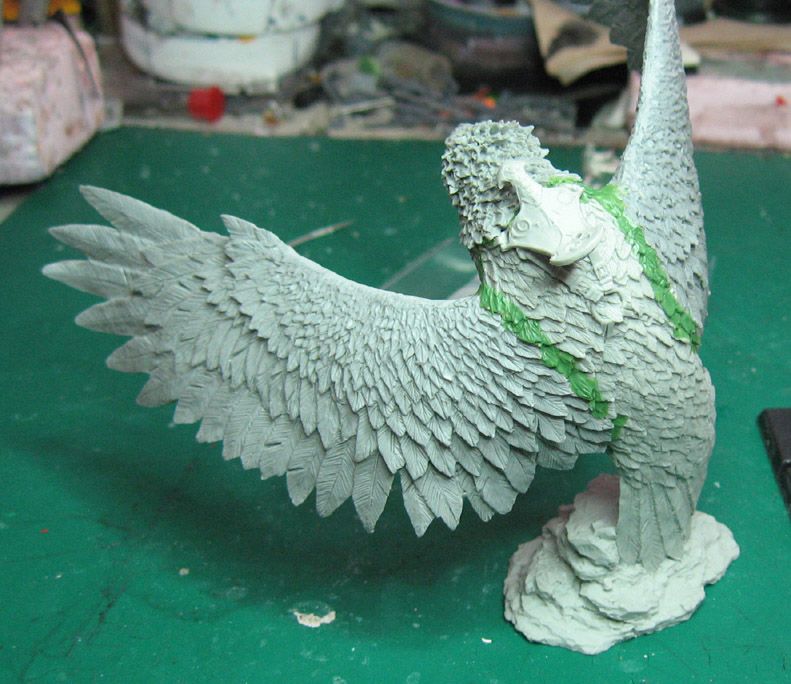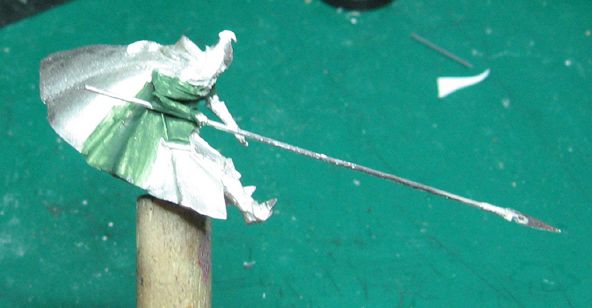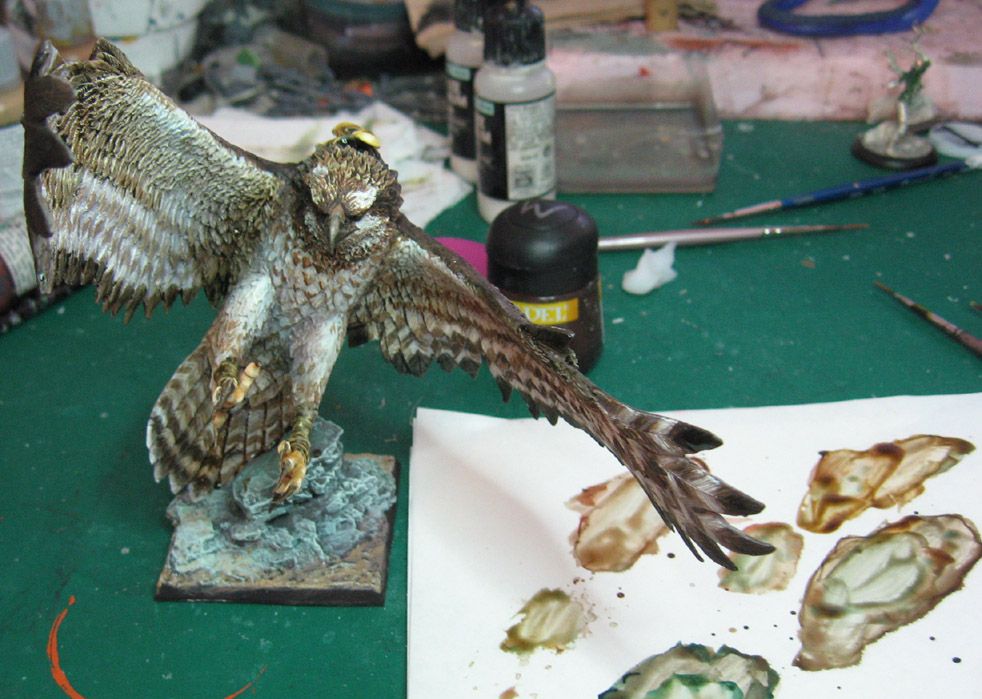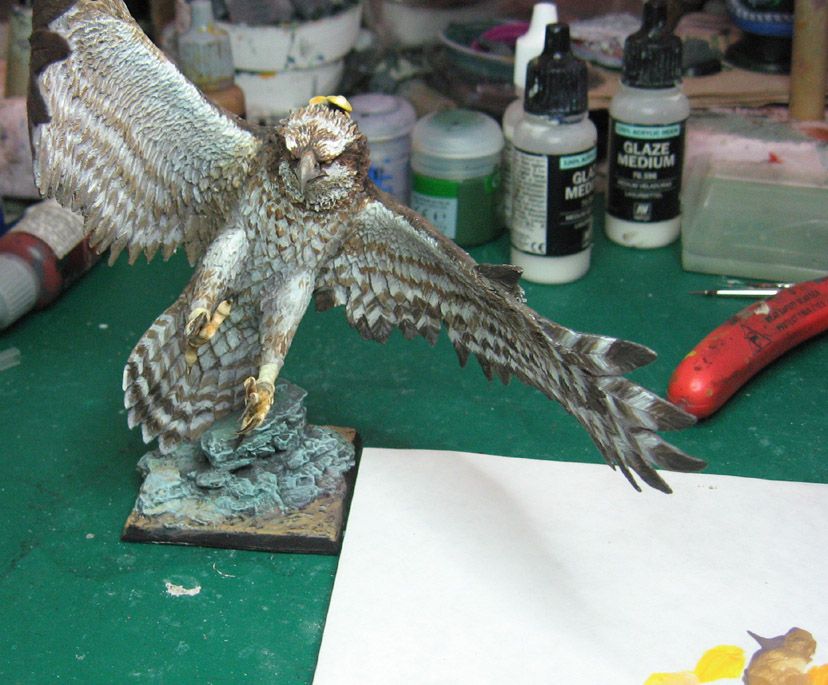
Here is the last set of images I shot of the painting process for the Osprey. Once all the lightest colors had been established, I began doing some glazes and washes in a very controlled fashion to get all the wing textures.
This image shows some washes on the back of the wings:
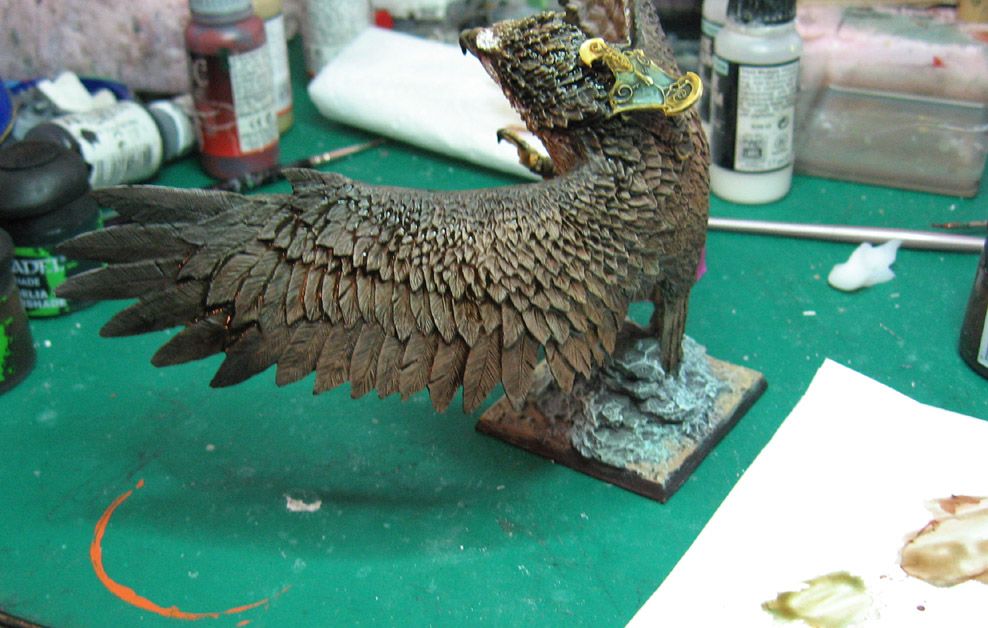
You can see that all the the dark markings have been done on the interiors of the wings:

This view lets you see the palette, and some of the various wash and glaze colors. I like to mix mine, creating just the right shade that I need.
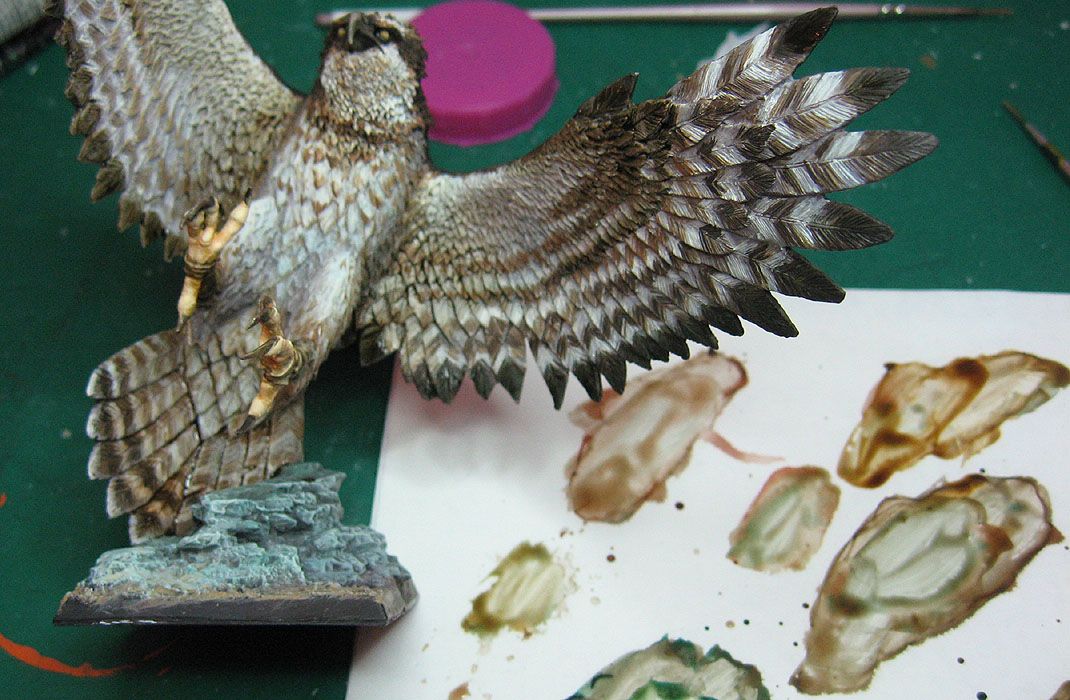
I also did a lot of different glazes on the face. After those were done, I could start doing things like the eyes, etc.
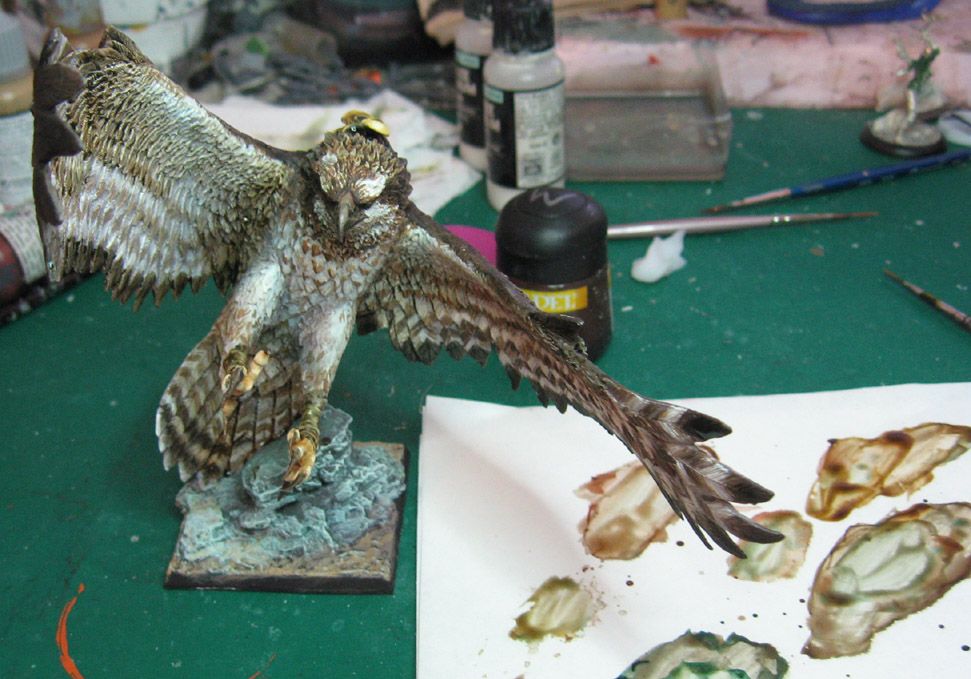
Here are a few views of the rider:
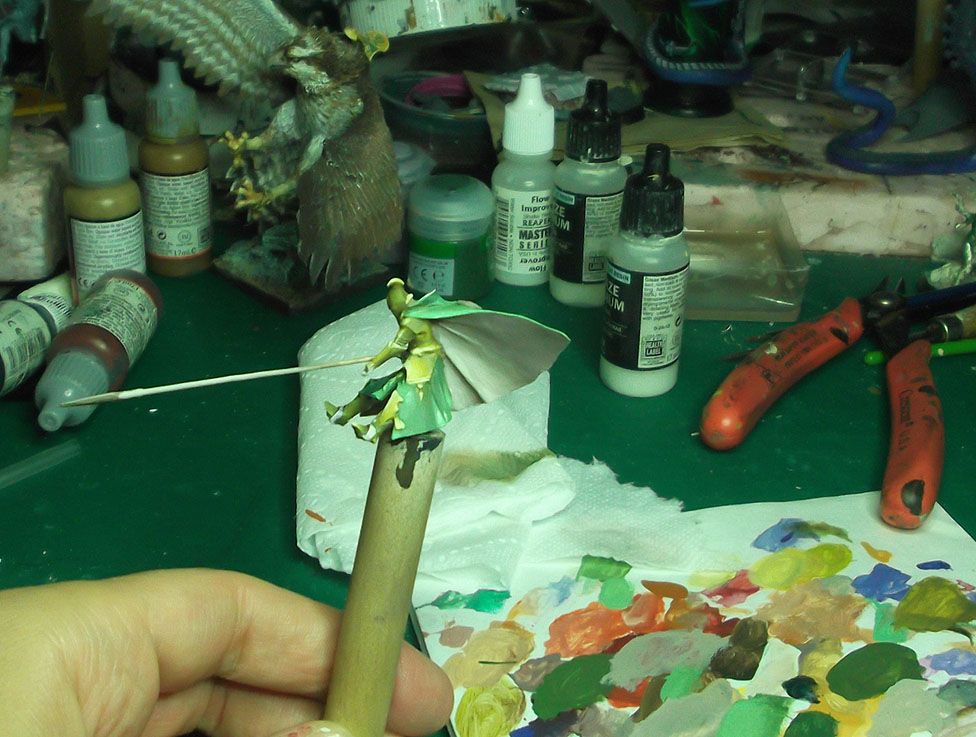
This was done the usual way for me. Working rapidly with a bigger brush, using glaze medium so that I could do some wet into wet blending.
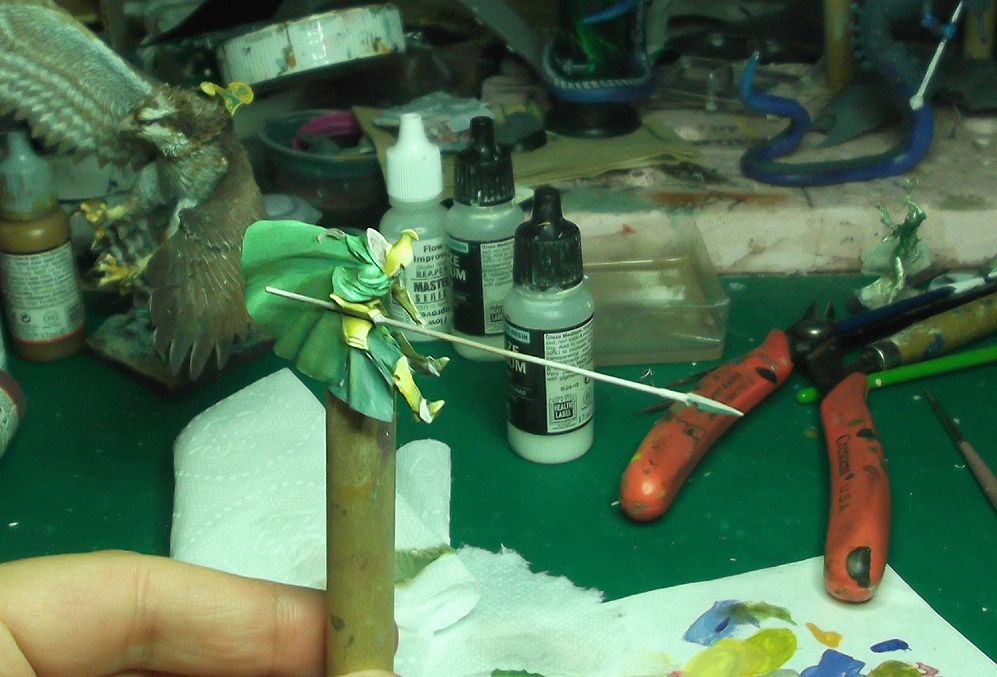
Once the middle and light tones are set, I started to shade the dark areas. I wanted to be sure that my shade colors were a much cooler green, so I mixed mostly blue into them.
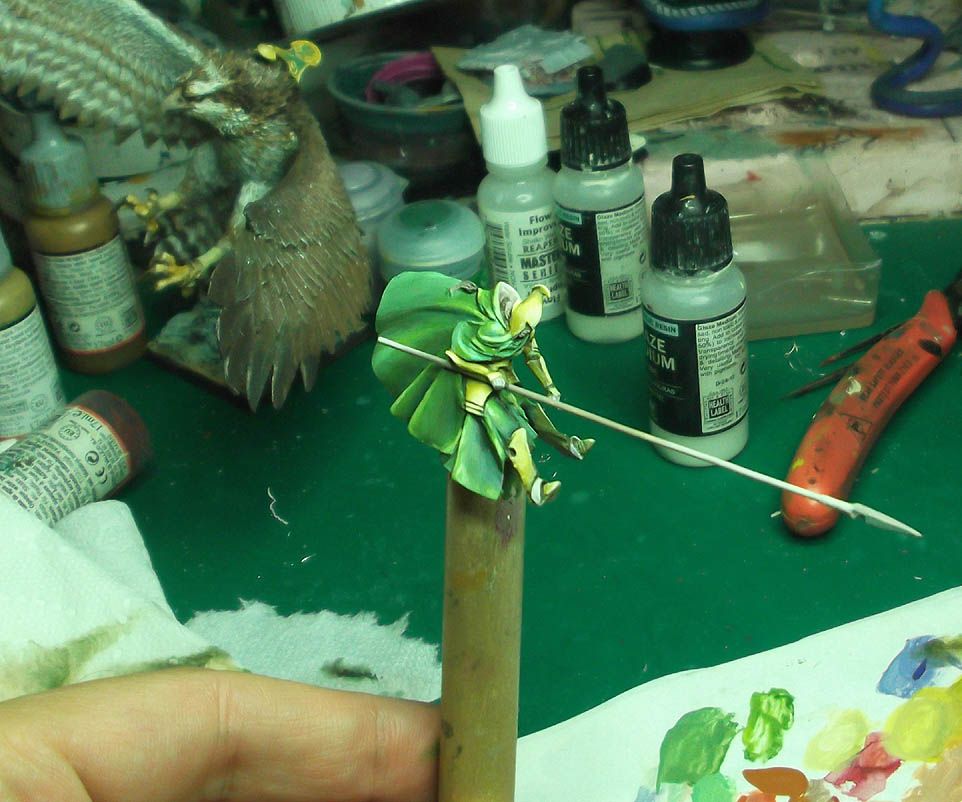
For the golds I tried to make the highlights cooler, and the shadows warmer in order to reflect the browns of the feathers on the bird. I made sure that the highest contrast areas would be on the angled surfaces of the armor.
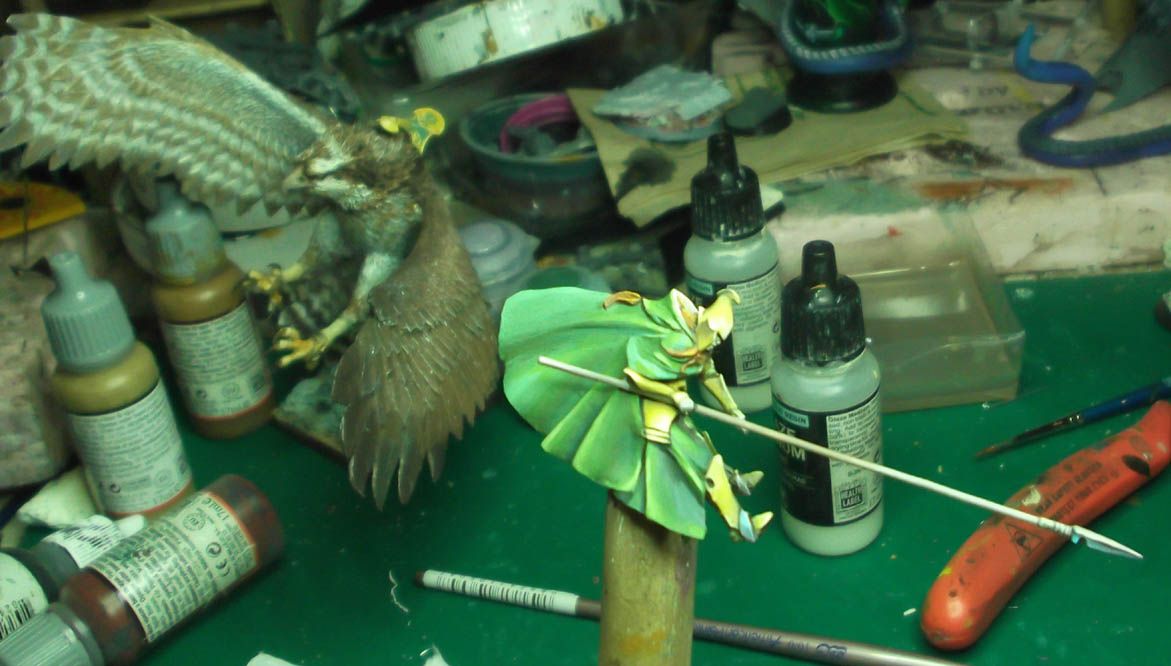
I did a similar thing to the blade of the spear, and made sure I had my lightest colors done so that I could make some freehad designs on the iside of the cloak.
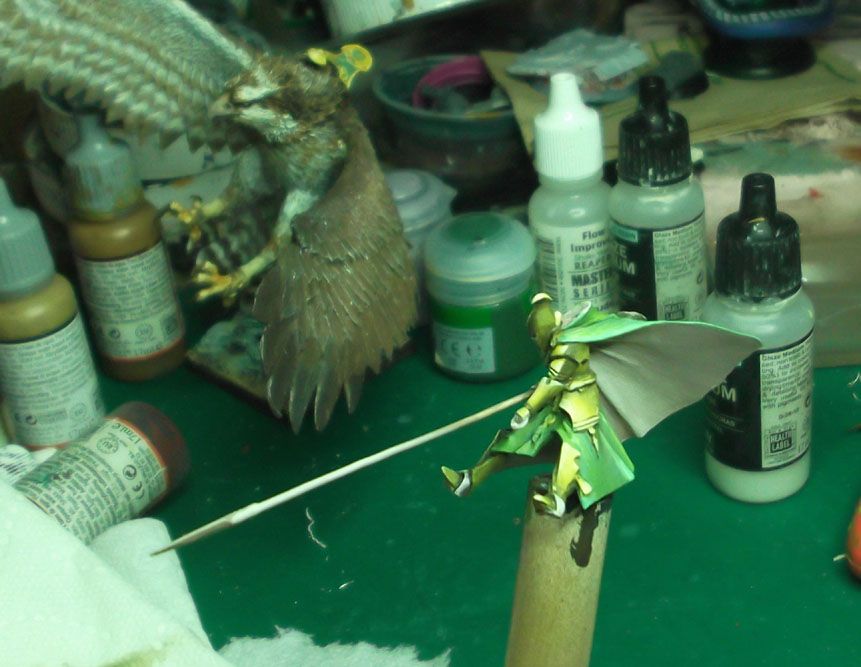
Here is a view of the design...
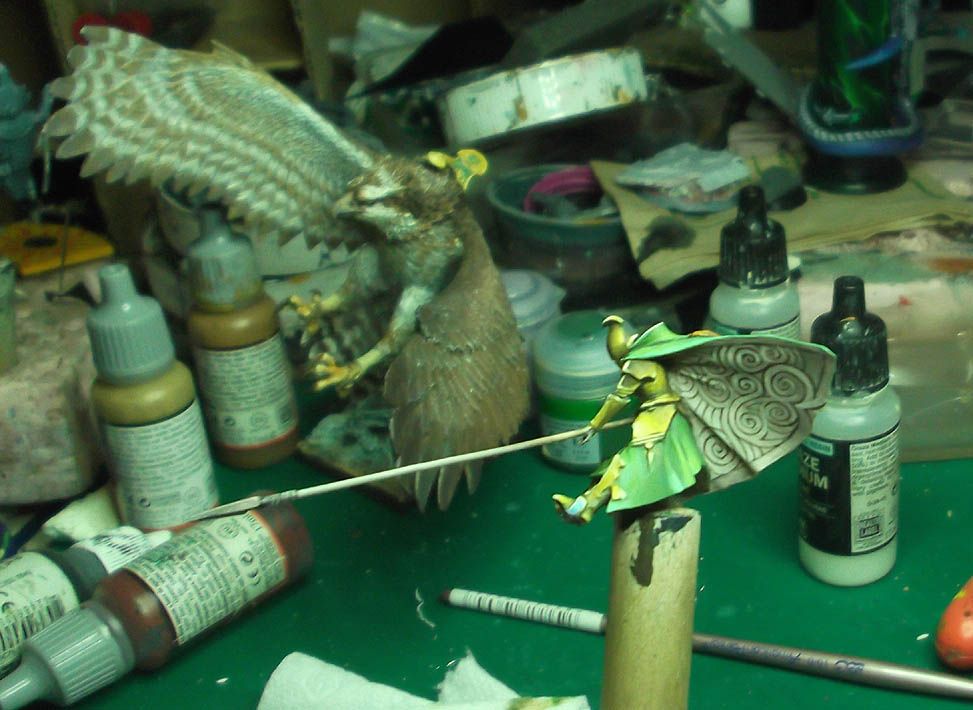
So, all that's left is to show you the pictures of the finished piece! There was some additional freehand on the outside of the cloak, and the light markings added to the back of the wings.
